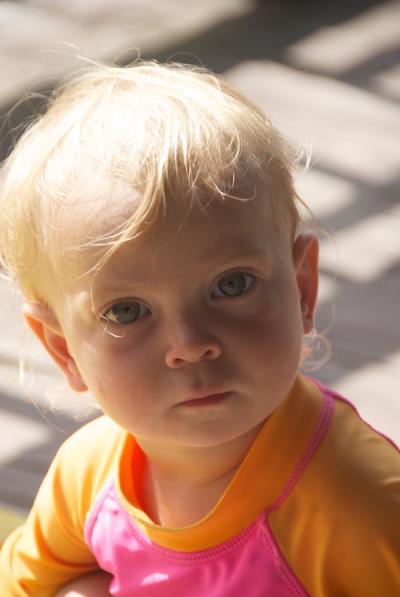As I watched my 17 month old granddaughter decode the world, it was impossible not to marvel at the enormity of the task and wonder what was going on behind that so expressive face as she processes the flood of sights, sounds, feelings, tastes, experiences, and consequences. Some predictable, but many not.

The pause followed by the emphatic nod yes or no. The straight-line eyebrows signifying displeasure. Picking things up and fingering them, turning them over, passing from hand to hand, sometimes testing them with mouth, teeth or nose. Dropping them to see what sound they make (or to see what the nearest grown-up would do).
What did the several second pause mean when I asked: “Do you want to go out on the porch?” Was the time before the vigorous assent spent in decoding, processing, or deciding? Was she figuring out what ‘porch’ means, or pondering the risk she might miss something else? Did she really want melon but decided that she would take the porch as an acceptable substitute.
By the time she is sufficiently articulate to discuss this, the answers to these questions will be irretrievably buried beneath mountains of useful and useless information, memories, associations. I can speculate but will never know.
Why stop there?
What does the checkout person at Willey’s General Store mean by that quick glance at the bagger after surveying my tousled hair and almost not safe for work t-shirt? What does the neighbor really think as she smiles and waves as I bike by? What does my daughter mean when she sighs at one of my insufferably bad puns? What does my wife think when I am lying on the couch with eyes closed? (Napping? Hiding? Shirking? Handsome bloke?)
What do patients really think when they smile when they ask how I am and I respond: better than I deserve. What are they really thinking when they nod in the affirmative when I ask if my explanation makes sense?
George Bernard Shaw said it well: “"The single biggest problem in communication is the illusion that it has taken place."
